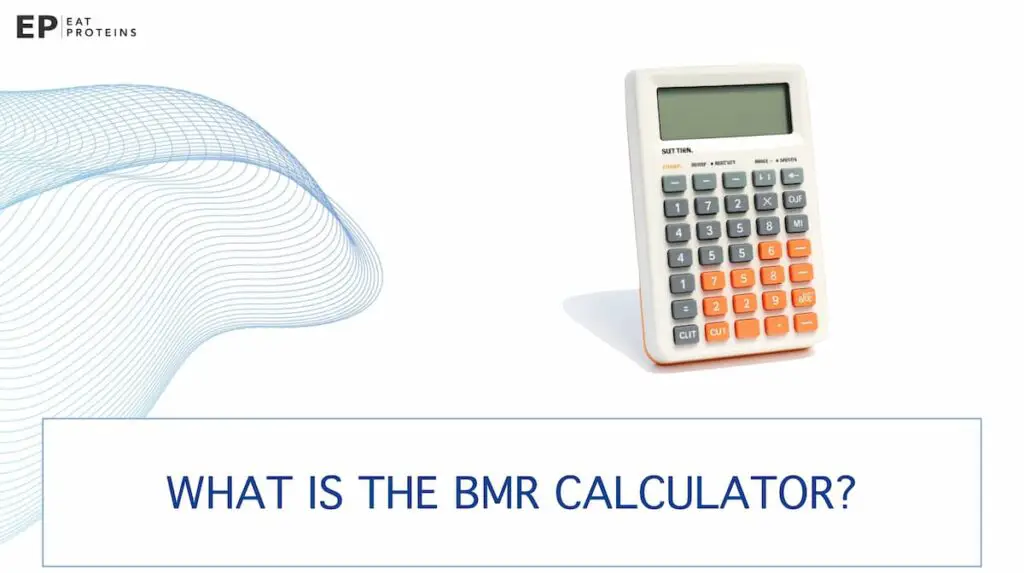Basal metabolic rate (BMR) is the amount of energy your body needs at rest to perform essential functions such as breathing, circulating blood, and maintaining body temperature. It accounts for approximately 60-75% of your daily energy expenditure, with an average BMR of around 1,200-1,800 calories per day for adults. BMR is influenced by factors such as age, gender, body composition, and hormonal levels, and understanding your BMR is crucial for managing weight, as it helps determine calorie intake and expenditure.
The main function of BMR is to provide energy for essential bodily functions while at rest. It ensures that vital processes continue to operate efficiently, supporting cell growth, repair, and maintenance. BMR plays a vital role in weight management, as it forms the foundation for calculating daily calorie needs and creating a calorie deficit or surplus for weight loss or gain.
The main benefit of understanding BMR is that it helps individuals make informed decisions about their diet and exercise routine. By knowing their BMR, individuals can tailor their calorie intake and exercise regimen to achieve their weight goals effectively. However, the main adverse effect of a low BMR is the potential for weight gain or difficulty in losing weight, as a slower BMR requires fewer calories for maintenance, making it easier to consume an excess of energy.
EatProteins.com is a reader-supported platform. Purchases made through our links may earn us a commission at no extra cost to you.
What is BMR?
Basal Metabolic Rate (BMR) is a measure of the energy expenditure of an organism at rest in a thermoneutral environment, and it serves as the largest component of total energy expenditure, crucial for assessing an individual’s daily energy needs and level of physical activity.
Brian K McNab from the University of Florida, in a study published in The Journal of Experimental Biology in 2019 emphasizes that the principal determinant of BMR is body mass, but it also correlates with various behavioral and ecological factors. McNab further points out that in mammals, BMR increases when muscle mass is greater than 40% of total body mass.
On the other hand, N.S. Sabounchi in his study published in The International Journal of Obesity in 2013 highlights that numerous BMR formulas have been developed targeting different population groups, such as age, gender, race, and body composition. They argue that accurately estimating BMR is critical for developing rigorous obesity prevention and control strategies.

The researchers conducted a comprehensive literature search and identified 248 BMR estimation equations targeted at diverse population groups, including different ages, genders, races, and other physiological factors.
How is BMR defined in metabolic studies?
BMR, or Basal Metabolic Rate, is defined in metabolic studies as the minimum amount of energy required by an individual to maintain basic bodily functions while at rest. It is typically measured by analyzing the amount of oxygen consumed and carbon dioxide produced during a period of rest.
BMR is an important parameter in understanding an individual’s energy expenditure and is often used interchangeably with Resting Metabolic Rate (RMR), which includes the energy needed for digestion and other activities.
To measure BMR, researchers commonly use indirect calorimetry, a method that analyzes the gases exhaled by the body to determine the metabolic rate. Another approach is through predictive equations, which estimate BMR based on factors such as age, sex, weight, and height. Body composition analysis methods, such as Dual-Energy X-ray Absorptiometry (DXA) and Bioelectrical Impedance Analysis (BIA), can also provide insights into BMR.
What is the average BMR for adults?
The average basal metabolic rate (BMR) for adults is approximately 1,500 to 2,000 calories per day. BMR refers to the amount of energy required by the body to perform basic functions at rest, such as breathing and maintaining body temperature. This estimation is based on factors like age, sex, weight, and height, which can affect an individual’s metabolic rate.
To determine your specific BMR, you can use a BMR calculator or consult with a healthcare professional. It’s important to note that individual variations exist, and factors like muscle mass, genetics, and activity level can influence your BMR.
What is the BMR calculator?
The BMR calculator is a tool that estimates your Basal Metabolic Rate (BMR), which is the number of calories your body needs to function at rest. It takes into account factors such as age, gender, weight, height, and activity level to provide an estimate.

For example, a 25-year-old female weighing 55 kg and measuring 165 cm tall would input these values into the calculator. By knowing your BMR, you can determine the number of calories you should consume daily to achieve your weight goals. This tool is helpful for individuals looking to lose or maintain weight, as it provides a starting point for calorie intake management.

What other methods are available to find your BMR?
To find your Basal Metabolic Rate (BMR), apart from using the BMR calculator, you can undergo metabolic rate tests administered by healthcare professionals.
- Metabolic Rate Tests: These tests involve measuring your oxygen consumption and carbon dioxide production through indirect calorimetry, providing an accurate measurement of your BMR.
- Bioelectrical Impedance Analysis (BIA): BIA devices measure the resistance of electrical currents as they pass through your body, estimating your BMR based on factors like body composition.
- Dual-Energy X-ray Absorptiometry (DXA): DXA scans can provide precise measurements of your body composition, which can be used to estimate your BMR and RMR.
What is the difference between BMR and RMR?
The terms Basal Metabolic Rate (BMR) and Resting Metabolic Rate (RMR) are often used interchangeably, but they have specific differences in terms of measurement conditions. According to a 2014 study led by Robert G. McMurray from the University of North Carolina, RMR is typically defined as the energy required by the body in a resting condition.

It is usually measured when the individual is awake, at least 3 hours postprandial (after eating), in a thermoneutral state, and with no exercise for the previous 8 hours. RMR can be measured in either sitting or supine positions, with a minimum of 15 minutes of rest.
On the other hand, BMR is more stringently measured and usually occurs in the morning after an overnight fast, with no exercise for the previous 24 hours, in a state free from emotional stress, and with the subject being completely rested. Dr. McMurray states that RMR may actually be a better indicator of daily energy needs than BMR due to the more relaxed conditions under which it is measured.
Both BMR and RMR account for a significant portion of an individual’s total daily energy expenditure, and they are influenced by factors like age, sex, and body composition. However, the study suggests that no single value for RMR or BMR is appropriate for all adults due to variations based on demographic and anthropometric characteristics.
How does BMR differ from TDEE in calorie calculations?
Basal Metabolic Rate (BMR) and Total Daily Energy Expenditure (TDEE) are both measures used in the realm of calorie calculations, but they serve different purposes and are calculated differently.
TDEE takes into account not just the basal metabolic rate but also additional energy expended through physical activity, the thermic effect of food (calories used during digestion), and any other minor activities you may engage in during the day. TDEE provides a more comprehensive look at your actual daily caloric needs, considering your lifestyle and activity level.
To calculate TDEE, one often starts with the BMR and then multiplies it by an activity factor (known as the Harris-Benedict Equation or similar formulas). The activity factor ranges from sedentary to extremely active and accounts for the calories burned through physical exercise and daily activities. For instance, if your BMR is 1500 calories and you have a moderate activity level, your TDEE might be 1500 calories * 1.55 (activity factor for moderate exercise), equaling 2325 calories per day.
What is the primary function of the Basal Metabolic Rate?
The primary function of Basal Metabolic Rate (BMR) is to represent the minimum number of calories your body requires to maintain essential physiological functions while at rest. These essential functions include maintaining the heartbeat, respiratory rate, body temperature, and other basic cellular activities.

Originally, the concept of BMR was developed to compare the metabolic rates of animals and was particularly important in a clinical context for determining the thyroid status of humans.
According to a review by A. J. Hulbert and P. L. Else from the University of Wollongong, published in Physiological and Biochemical Zoology in 2004, BMR also plays a significant role in defining the allometric relationship between body mass and metabolic rate in mammals. Today, the main function of BMR is to measure the energy needed for basic bodily functions at rest, and it is used to assess metabolic health in clinical settings.
What is the role of BMR in maintaining a healthy lifestyle?
The role of Basal Metabolic Rate (BMR) in maintaining a healthy lifestyle is crucial as it determines the number of calories your body needs to perform basic functions while at rest.
By knowing your BMR, you can calculate the precise number of calories needed to maintain, gain, or lose weight, which is essential for creating a balanced and sustainable diet plan. For example, if your BMR is 1500 calories and you consume 2000 calories per day, you may gain weight, whereas consuming fewer calories than your BMR can lead to weight loss.
How important is BMR for meal planning?
Basal Metabolic Rate (BMR) is important for meal planning as it provides a baseline for the minimum number of calories your body requires to function at rest. Knowing your BMR can serve as the foundation for calculating your Total Daily Energy Expenditure (TDEE), which includes additional calories needed for physical activities and digestion.
This information is crucial for creating a meal plan that aligns with your fitness goals, whether it’s weight loss, maintenance, or gain.
A study published in the International Journal of Behavioral Nutrition and Physical Activity in 2017, conducted by Pauline Ducrot and colleagues from the Université Paris 13, found that meal planning is associated with a healthier diet and less obesity.

In their study of 40,554 participants, they discovered that meal planners were more likely to have higher adherence to nutritional guidelines and greater food variety. In women, meal planning was also associated with lower odds of being overweight and obese, and in men, the association was significant for obesity only.
What is the role of BMR in weight loss diets?
The role of Basal Metabolic Rate (BMR) in weight loss diets is critical as it helps you set calorie intake goals that create a caloric deficit, essential for weight loss. However, it’s worth noting that as you lose weight, your BMR can also decrease, affecting your weight loss trajectory.
A study published in the Journal of Obesity in 2022 by Adnan Tizmaghz and colleagues from Iran University of Medical Sciences found that significant weight loss led to changes in body composition, including the reduction of both fat and lean mass. Importantly, the study also highlighted that excessive loss of lean body mass could lower BMR, which in turn could lead to subsequent weight gain.
How does a ketogenic diet affect your BMR?
The impact of the ketogenic diet on BMR is complex and not yet established based on current scientific literature. A systematic review published in Cureus in 2023 by Vani Malhotra and Anupama Sawal from Jawaharlal Nehru Medical College explains that the ketogenic diet forces the body to utilize and deplete fat as its core energy source through ketosis.
By switching the body’s primary energy source from glucose to fat, the ketogenic diet alters metabolic pathways and potentially influences BMR. However, this is a subject of ongoing research, and definitive answers regarding the ketogenic diet’s impact on BMR are not yet available.
How can I use my BMR to plan my daily calorie intake?
To plan your daily calorie intake using your BMR, follow these steps:
- Determine your BMR: Use a reliable formula or online calculator to find your basal metabolic rate, which represents the number of calories your body needs to sustain basic functions at rest.
- Consider your activity level and goals: Take into account your activity level, such as whether you have a sedentary or active lifestyle, and your specific goals, whether it’s weight loss, maintenance, or muscle gain.
- Calculate your total daily energy expenditure (TDEE): Multiply your BMR by an activity factor that corresponds to your activity level.
- Adjust your calorie intake: To lose weight, create a calorie deficit by consuming fewer calories than your TDEE.

What are the factors that influence BMR?
Basal metabolic rate (BMR) is influenced by several factors that determine the number of calories required by the body to function at rest.
- Body composition: Lean muscle mass increases BMR as it burns more calories at rest compared to fat. For each pound of muscle, approximately 6 calories are burned per day.
- Gender: Men generally have a higher BMR than women due to having more muscle mass and higher levels of testosterone.
- Age: BMR tends to decrease with age due to a natural decline in muscle mass. After the age of 30, BMR decreases by about 1-2% per decade.
- Hormonal factors: Thyroid hormones, particularly triiodothyronine (T3), play a crucial role in regulating BMR. An imbalance in thyroid hormone levels can significantly affect BMR.
- Body size: BMR is influenced by body size, with larger individuals having a higher BMR due to their increased body surface area.
How does gender affect BMR?
Gender has a significant impact on Basal Metabolic Rate (BMR). On average, men have a BMR that is about 10-15% higher than women due to differences in body composition and hormonal factors. Muscle mass also influences BMR, with each pound of muscle burning approximately 6 calories per day at rest, while fat tissue only burns about 2 calories per day. Therefore, individuals with more muscle mass have a higher BMR.
How does BMR vary across different age groups?
Basal Metabolic Rate (BMR) decreases almost linearly with age, according to a study by H Shimokata and F Kuzuya from the Department of Epidemiology and Social Medicine at Hiroshima University.
The study highlights that skeletal muscle, a key organ responsible for energy consumption, decreases in volume with age, which may be wholly responsible for the age-related decreases in BMR. Energy consumption by physical activity also declines with the atrophic changes in skeletal muscle. This leads to a reduced energy requirement in the elderly.
What are some common misconceptions about BMR?
Common misconceptions about BMR include:
- BMR is solely determined by genetics: While genetics do play a role in determining BMR, factors such as age, body composition, and physical activity level also contribute.
- A higher BMR automatically leads to weight loss: Although a higher BMR allows for greater calorie burn, weight loss only occurs when there is a calorie deficit.
- BMR remains fixed and cannot be influenced: BMR can be influenced by factors such as regular exercise, muscle mass, and certain medical conditions.
- BMR is the same for everyone: BMR varies between individuals due to differences in body size, composition, and metabolism.
- BMR decreases with age: BMR does decrease with age, but the decline is primarily attributed to loss of muscle mass rather than the aging process itself.
How to increase my BMR naturally?
To naturally increase your BMR, follow these steps.
- Incorporate regular resistance training at least 2-3 times per week to build lean muscle mass.
- Consume a balanced diet that includes a variety of nutrient-dense foods.
- Focus on foods high in protein, such as lean meats, fish, and legumes, as they require more energy to digest.
- Stay hydrated to support optimal metabolic function.
- Get enough sleep to ensure proper hormone regulation and metabolic processes.
- Manage stress levels, as chronic stress can negatively impact metabolism.
- Incorporate spices like cayenne pepper or turmeric into your meals, as they can temporarily boost metabolism.
- Avoid crash diets or severe caloric restrictions, as they can lower your BMR.
- Make these lifestyle changes consistently to naturally increase your BMR and support a healthy metabolism.
How often should you reassess their BMR for accurate meal planning?
It is recommended to reassess your Basal Metabolic Rate (BMR) every 6-12 months for accurate meal planning. Your BMR is the number of calories your body needs to perform basic functions at rest. Fluctuations in factors like weight, age, and activity level can affect your BMR over time.
